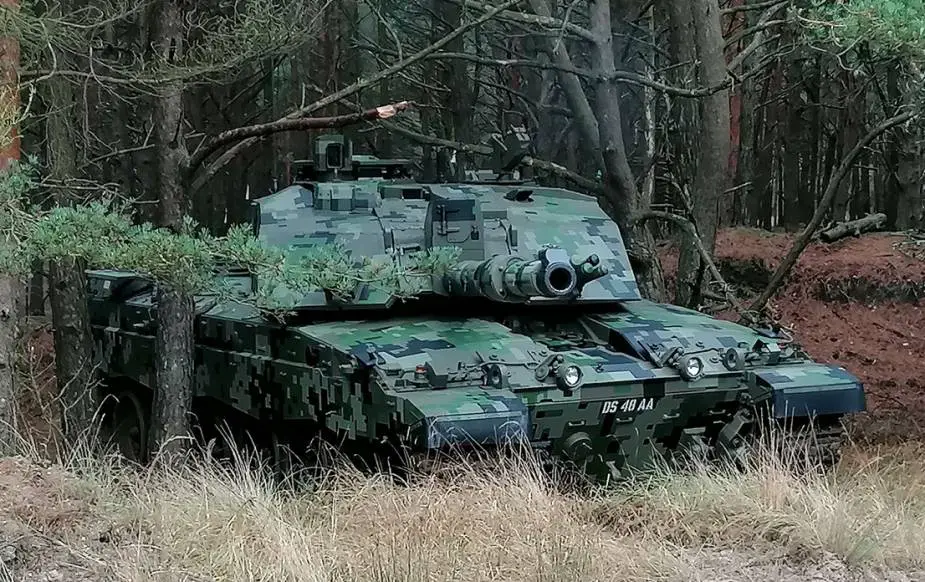Breaking news
UK soldiers help develop next-generation tank camouflage.
One of the keys to success in war is learning from experience and adapting as a result. That is just what happened when a team from the Armoured Trials and Development Unit (ATDU) visited British tank units in Estonia. The British army reports on its website.
Follow Army Recognition on Google News at this link

The Multi-Coloured Camouflage Scheme (MCDCS) project was launched as a result of our troops’ experience in Estonia, lessons gleaned from the Royal Tank Regiment’s ‘Streetfighter’ experiment (Picture source: UK MoD)
The Multi-Coloured Camouflage Scheme (MCDCS) project was launched as a result of our troops’ experience in Estonia, lessons gleaned from the Royal Tank Regiment’s ‘Streetfighter’ experiment, and a long-recognised need to hide, deceive, and survive on the modern battlefield. We know from operational analysis that, in combat, tanks are destroyed from surprisingly short range and that the preservation of our battle-winning capabilities is vital to success.
MCDCS is the product of a joint project involving the Dorset-based ATDU, the Defence Science and Technology Laboratory (DSTL), and the Tank Museum. The project was devised to create a camouflage scheme which would decrease detection, both by the human eye and artificial intelligence-enabled targeting tools, with a goal of tricking the enemy and creating an advantage for the camouflaged vehicle.
Using archival information from the Tank Museum, including the camouflage schemes of the ‘dazzle’ ships of the First World War, the paint and deception projects practiced in the Western Desert in the Second World War, and more recent paint experiments in the 1960s and 70s, the main elements were established. DSTL were then able to provide state-of-the-art paint materials promoting low levels of radar detection and high heat dissipation to create the complete MCDCS.
Finally, the experiment was tested practically by soldiers based at the Army’s Armour Centre equipped with various types of sensing equipment as well as the naked eye and binoculars. In tests, MCDCS drastically reduced both detection and recognition in critical short-range (400-1,500 metres). An example of the Army listening to its soldiers, partnering with industry and academia, and producing a battle-winning solution.

The Multi-Coloured Camouflage Scheme (MCDCS) project was launched as a result of our troops’ experience in Estonia, lessons gleaned from the Royal Tank Regiment’s ‘Streetfighter’ experiment (Picture source: UK MoD)


























